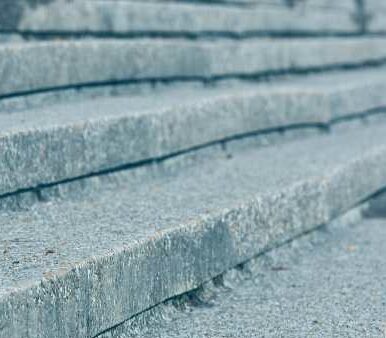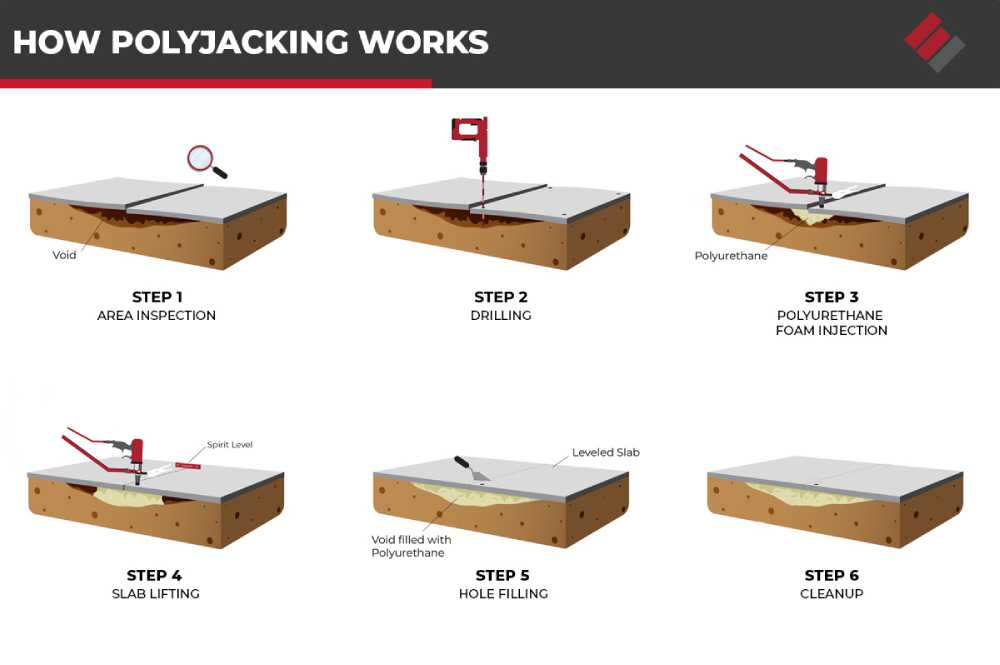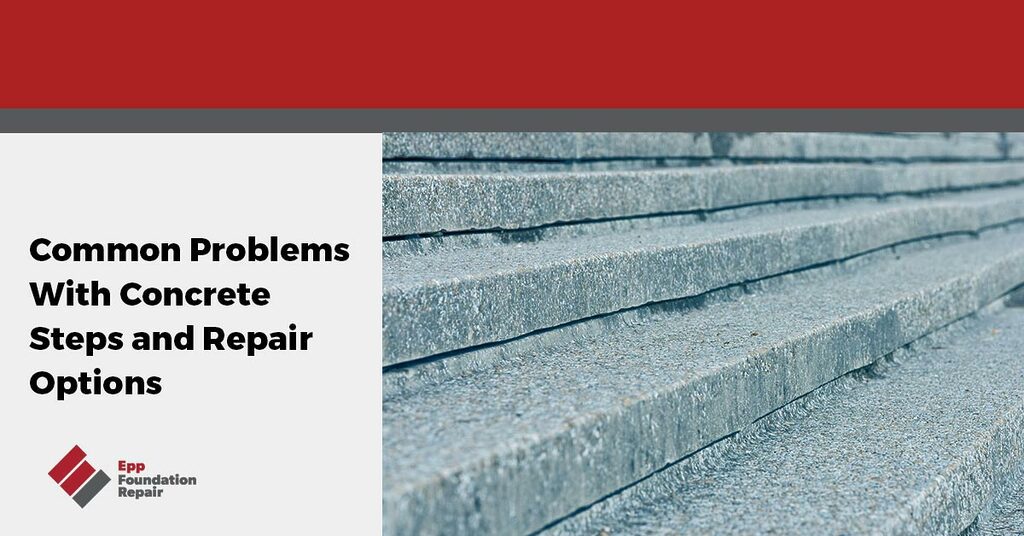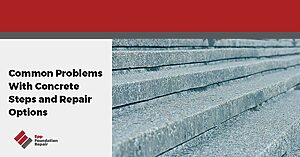We rely on our steps to get us into our homes and from one level to another. They are unsung heroes in most homes, and we don’t pay that much attention to them until problems occur.
When And How Are Concrete Steps Repaired?
Various issues may be associated with concrete steps, but the problem is often the same. If they are not in good repair, they are a trip hazard and an unsightly part of the home, usually found at the entrance. That is why you are likely looking for ‘concrete step repair near me’.
Why Do Concrete Steps Fail?
We may see many different issues with concrete steps, but in many cases, the problem behind the problem is the same. In almost every case, some issue with the soil under the stairs leads to the need for concrete step repair.

- Freeze/Thaw: In some areas, the soil under the concrete steps may freeze and thaw multiple times yearly. This can cause the stairs to rise and fall with the expansion and contraction of the underlying soil.
- Expansive Soil: In other cases, expansive soil could lead to issues when there is excessive moisture in the ground. As the moisture level increases, the soil expands and puts pressure on the stairs from underneath.
- Voids under the Steps: When the soil dries, it contracts and leaves voids under the concrete steps. Those voids are why many concrete steps sink and separate from the home.
- Tree Roots: Nearby tree roots could push up on the steps as they grow.
- Improper Construction Techniques: If the soil wasn’t properly compacted or if water does not drain properly, it could lead to problems with the concrete steps.
Regardless of the issue causing problems with the concrete steps, it is essential to have them fixed. Fortunately, some methods allow the steps to be fixed quickly and easily.
Should You Repair Your Own Concrete Steps?
One of the most common questions homeowners ask about concrete step repair is whether they can take care of it on their own. Is this a DIY project you should consider?
Although there may be many projects that weekend warriors could undertake, concrete step repair is not necessarily one you should consider. It requires specialized tools and equipment to get the job done right, and if it isn’t done correctly, problems will likely happen in the future.
Certain minor repairs could be done, such as resurfacing the concrete if it needs such maintenance, but more extensive repairs are better left to the professionals near you. They are the ones who have the tools and the know-how to lift concrete stairs permanently and fix the significant issues that may be occurring.
How Separating or Sinking Concrete Steps Are Repaired
One of the more common problems associated with concrete steps is when they sink and separate from the home. This leaves behind an eyesore that is also easily a trip hazard.
In many cases, when you see concrete steps sinking, it isn’t a problem with the concrete. In almost every case, it is an issue with the soil supporting or not supporting the concrete step.
There may be several ways to repair this problem, but the best way is to use polyjacking. Polyjacking is a process that uses expanding polyurethane foam to lift the step back into place again.

Small holes will be drilled through the concrete. Ports are then inserted into the holes so specialized polyurethane foam injection guns can be used.
A concrete lifting professional will begin pumping the two-part polyurethane through the hole and into the void under the concrete step. They will monitor the process carefully to ensure the step is precisely lifted into position.
As the two-part polyurethane mixture mixes, it begins to expand rapidly. This process compacts the soil under the step while simultaneously lifting the concrete into position.
Polyurethane foam is environmentally friendly and a permanent solution, unlike mud jacking, the old method that was sometimes used for this process.
Large cracks that may have occurred due to the settling in the concrete step will also be closed to a certain extent during the lifting process. Additional repairs can then take place to seal the crack and keep it from expanding further.
How Damaged And Cracked Concrete Steps Are Repaired
There are times when other types of damage may occur to concrete steps. This can include anything from severe cracking to the disintegration of the concrete surface.
If there was a problem with the concrete pour or if there is extensive cracking, removing and replacing the concrete step with a new one may be necessary. It is also essential to have a professional do this job, as they will ensure that the soil will support the new step in place.
Are Damaged Concrete Steps A Sign Of Foundation Problems?
Visible damage to a concrete step may be a problem on its own. It could be a localized issue, but in some cases, it may also be a sign that more significant problems exist.
Since the foundation for the concrete step is not often as well supported as the rest of the home, this may be the first sign that foundation problems exist. The same issues that result in a concrete step sinking, such as expansive soil or concrete heaving, may also be an issue with the overall foundation.
One way to determine this is to look for other signs of foundation problems. This can include sticking windows and doors, cracks in the foundation, and separating walls and floors.
The best thing you can do to protect your home and determine if more significant problems exist is to request a foundation inspection.
Contact us today by filling out the form on our website or giving us a call. One of our friendly foundation professionals will get back to you soon to get the process started.







